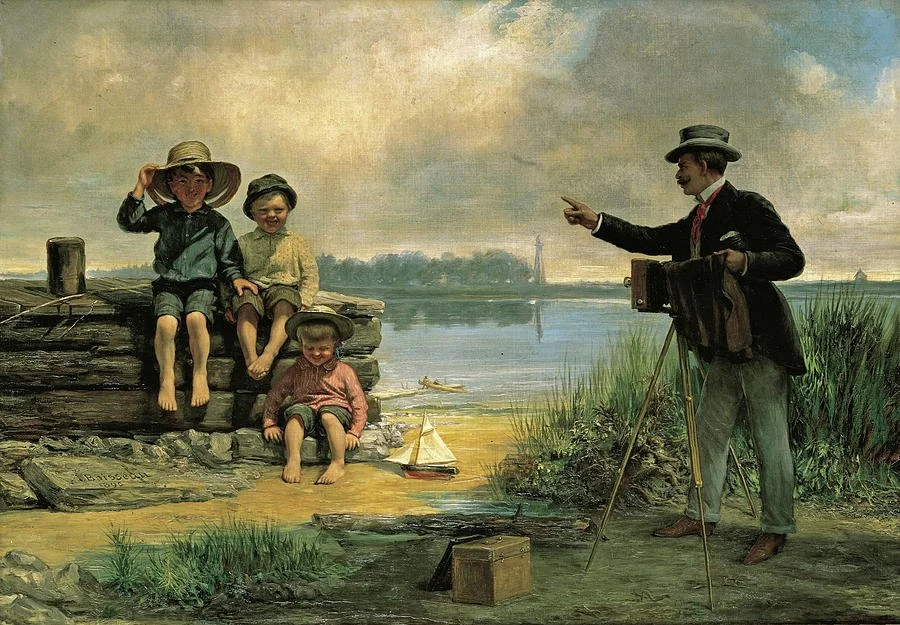Martín Molinero (Buenos Aires, 1975). Based in Madrid. Member of VIVO Photography Collective https://www.street-photographers.com/
What was the trigger, or inspiration, that led to your taking up photography?
The trigger was a photography workshop given by my uncle when I was 17 years old. It was 1992, a year after I’d come back to Buenos Aires, having lived two years in a tiny little hamlet in Galicia, Spain. The first year in Galicia was tough for the teen urbanite I was. I missed my friends from Argentina and living in a big city. When I finally adjust myself to the country life and I made new friends in Galicia, my fate was that I had to return to Buenos Aires. Having already lost contact with my old friends there, I became sort of a loner. One changes a lot at that age. That was when I discovered the beauty of my hometown and I developed a fondness for taking long walks and wandering the streets of Buenos Aires. So, when my uncle taught me the fundamentals of photography and helped me to get a battered second-hand Minolta, the camera became a much-needed companion for my ramblings and perambulations. Since then, photography became a very important part of my life.
What do you hope to communicate or describe with your work?
Well, I would like to know it too, though I’m not sure I have that hope. I don’t have an agenda. I just like to walk and observe. I don’t deal with newsworthy events, I don’t intend to describe nor instruct, neither do I consider my photographs art. Perhaps I just hope to “record” some things. You know, I can’t make sense out of whatever I come across at all, but, pretty optimistically, I still believe that I might find a clue about it in a hypothetical future. So I “record” whatever I come across that catch my interest, in order to eventually revisit it. I guess you could consider it a sort of laborious procrastination… What do I hope to record? I mostly take photographs as a sort of informal survey of my surroundings and my inner life. It’s also a way to prompt experiences and remember them. For me, time, transience and memory are a constant source of wonder and perplexity, and the camera’s ability to deceivingly stop time does nothing but enhance that wonder and that perplexity by somehow disturbing the stream of time that keeps rushing past. I’m just still amazed by the strange, unparalleled discontinuity created by photography. Sometimes I like to think that photographs are messages from the past sent to a future self. They go like: “Hey! Take a look at how this was! Look! Do you remember this?!”. I hope these faint vestiges from the past would enrich and somehow increase my experience of the present. You know, there’s this nice, comforting idea in Chris Marker’s La Jetée, the idea that memories (and certainly photographs) could be a sort of loophole in Time, a loophole through which one could transfer, from past to present times, supplies, medicines, energy sources…
Has your relationship with photography changed over time, and if so how?
No doubt it changed a lot. After the first impulse, there was a time, in my early twenties, when I enjoyed much more making prints than taking pictures. My bedroom was my darkroom (or vice versa). I spent many nights making prints, dodging and burning and listening to music. I still miss it. I only shot black and white back then, mostly my friends and some shy, 50 mm street photos. I got a Canon AE-1 and began to shot medium format with a terrible Yashicaflex. I timidly sought to earn some money taking photographs. It didn’t work. I graduated; I moved to Barcelona. When I turned 35, after a decade without taking photographs, my wife gave me a digital camera as a birthday gift. Digital… Terra incognita. Awkward, intangible, ethereal in a bad way, but easier and affordable. So, eight years afterward, here we are. Still going.
Select 5 of your photos and talk about how they came to be and how they reflect your working methods.
All photos selected here were taken last year.
(1) This photo is very significant for me. I took it while moving to Madrid, after having lived for 14 years in Barcelona. Driving through the desert-like region of Los Monegros (Aragón) towards Madrid, I took the sunrise (or sunset?) and the bull as a good omen, despite of both being rather clumsy, naive representations, a circumstance which could possibly challenge, if not entirely impugn, my optimistic expectations.
(2) Besides the obvious symbolic interpretations prompted by this photo, I like the fact that the hundred-and-fifty-year-old cypress tree whose roots damaged the Azrael’s sculpture is somehow “punished” by being brutishly attached at it. In order to fill the tree trunk from the right side, I held the flash with my left hand and crossed the left arm over my right side, the coiled cord crossing my neck, in a rather contortionist, tortured way somehow appropriate to the subject. A couple of days after taking this photo I went back to this cemetery and, while walking through the gravestones, I heard horrifying howls and terrible whines that made my blood run cold. They were pigs. It turned out there’s a big slaughterhouse next to the cemetery. Can you believe it?
(3) This photo is one of those gifts that one can get at the least expected moment. The church is known as “Our Lady of Anguish”, Patroness of Aranjuez, whose image is reflected on the glass behind the man. The Virgin’s image, whose face is bathed in tears for further dramatic effect, was re-made in 1940. The original one was burned during the Spanish Civil War.
(4) I took this one while climbing the stairs of the Granada Cathedral. In a fit of second-youth enthusiasm, these nice ladies were sprawled on the steps watching the cathedral upside down. I was lucky to capture the synchronized standing up. I’ve said before that I like recording things. Well, there were thousands of starlings flying around and noisily calling and singing like mad when I took this photo. The flock gradually gathered in a nearby square called “Plaza de la Trinidad” (Trinity Square). I audio-recorded them, as well as the tinkling of cutlery and murmur of conversations emerging from bars and restaurants that surround the square. The noisy starlings and the chatter of the people seemed to reply and mock each other... Ok, none of this is perceptible in the photograph, but this synchronized old ladies’ photograph is intimately linked in my memory with the starlings’ crazy calls and the people’s chatter (all of which has been recorded and stored in this photograph and in a few audio files for further examination...).
(5) I took this one last month. Well, the tree trunk behind the lady is really annoying and the photo is far from being good, but I like how things worked out with this one. I’m still discovering Madrid, which is quite bigger than Barcelona, and I don’t understand yet its different light conditions over the year. Victor Llorente, a true “madrileño” (Madrilenian) and a very fine photographer from NYCSPC, gave me a tip on this street, which is called “Calle Serrano”. In a sort of mundane, pedestrian “veni, vidi, vici” kind of way, I went there, walked three blocks and took this photo. A couple of days afterward, the red decoration crosses weren’t there anymore.
You can see more of Martin's photos and follow him on Instagram





